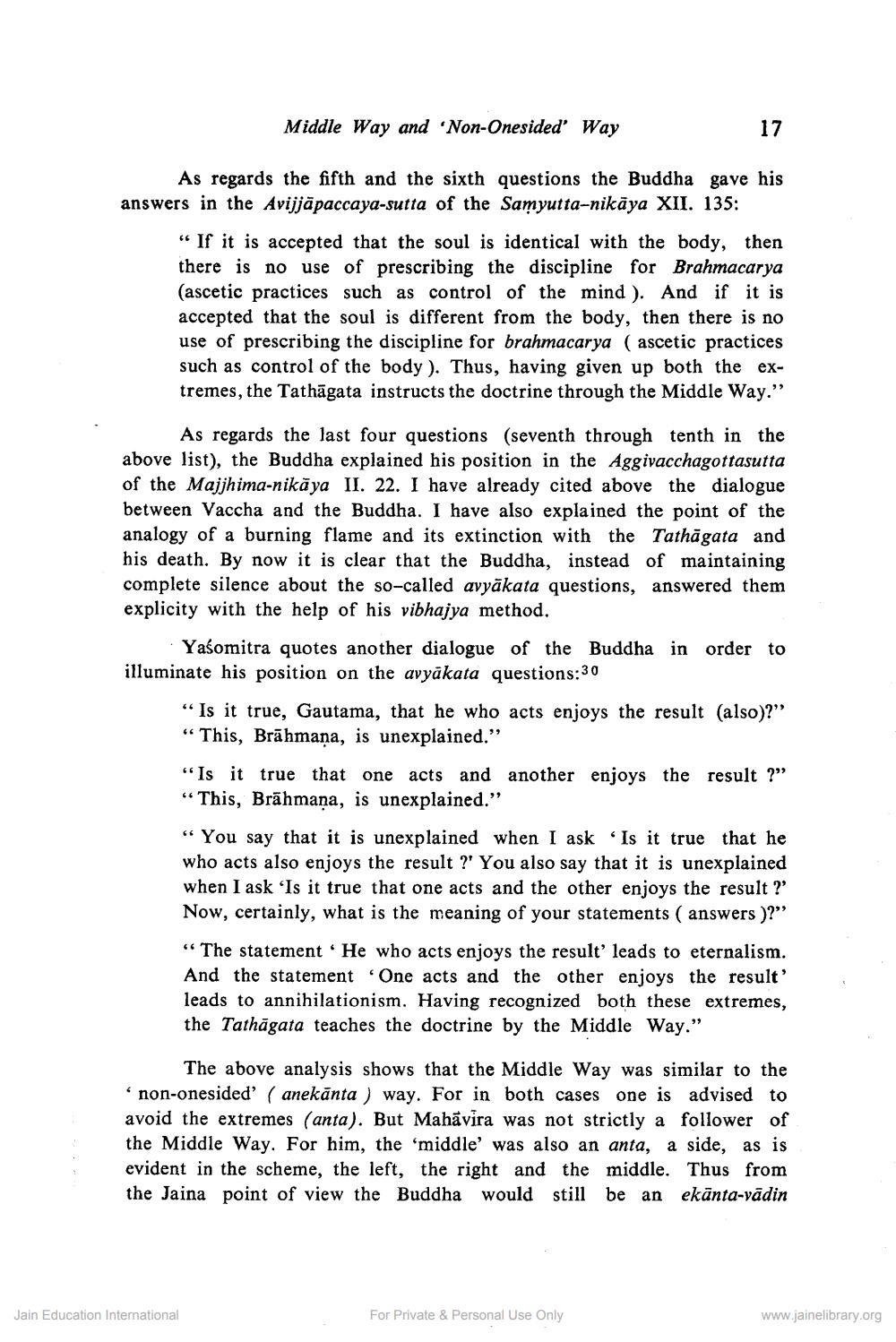________________
Middle Way and 'Non-Onesided' Way
17
As regards the fifth and the sixth questions the Buddha gave his answers in the Avijjāpaccaya-sutta of the Samyutta-nikāya XII. 135:
“ If it is accepted that the soul is identical with the body, then there is no use of prescribing the discipline for Brahmacarya (ascetic practices such as control of the mind ). And if it is accepted that the soul is different from the body, then there is no use of prescribing the discipline for brahmacarya ( ascetic practices such as control of the body ). Thus, having given up both the extremes, the Tathāgata instructs the doctrine through the Middle Way."
As regards the last four questions (seventh through tenth in the above list), the Buddha explained his position in the Aggivacchagottasutta of the Majjhima-nikāya II. 22. I have already cited above the dialogue between Vaccha and the Buddha. I have also explained the point of the analogy of a burning flame and its extinction with the Tathāgata and his death. By now it is clear that the Buddha, instead of maintaining complete silence about the so-called avyäkata questions, answered them explicity with the help of his vibhajya method.
Yaśomitra quotes another dialogue of the Buddha in order to illuminate his position on the avyäkata questions:30
“ Is it true, Gautama, that he who acts enjoys the result (also)?” “This, Brāhmana, is unexplained." "Is it true that one acts and another enjoys the result ?" ** This, Brāhmana, is unexplained.”
“You say that it is unexplained when I ask 'Is it true that he who acts also enjoys the result ?' You also say that it is unexplained when I ask 'Is it true that one acts and the other enjoys the result ?' Now, certainly, what is the meaning of your statements ( answers )?”
“ The statement. He who acts enjoys the result' leads to eternalism. And the statement One acts and the other enjoys the result' leads to annihilationism. Having recognized both these extremes, the Tathāgata teaches the doctrine by the Middle Way."
The above analysis shows that the Middle Way was similar to the * non-onesided' ( anekānta ) way. For in both cases one is advised to avoid the extremes (anta). But Mahāvira was not strictly a follower of the Middle Way. For him, the 'middle' was also an anta, a side, as is evident in the scheme, the left, the right and the middle. Thus from the Jaina point of view the Buddha would still be an ekānta-vādin
Jain Education International
For Private & Personal Use Only
www.jainelibrary.org




